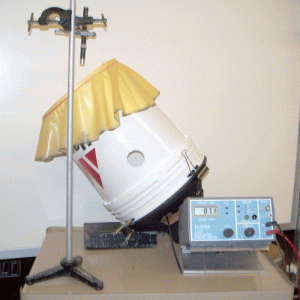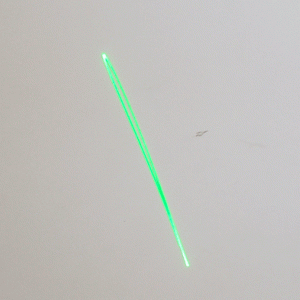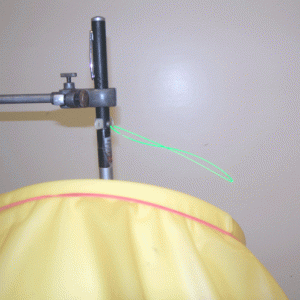College of Liberal Arts & Sciences
3C10.15 - Ear Drum Model
Place the rubber membrane over the pail/speaker assembly, stretch it tight, and secure it with a rubber band. Center and tape the mirror over the hole in the pail. Orient the laser and the pail / speaker assembly so that the reflection of the laser off the mirror can be easily seen on a screen. Observe the different vibrational modes on the screen as you sweep the frequencies. Frequencies between 30 and 150 Hz. work best. Do not go over 250 Hz. as what you will observe is mostly coupled modes and harmonics.
- Nicholas P. Truncale and Michelle T. Graham, "Visualizing Sound with an Electro-Optical Eardrum", TPT, Vol. 52, #2, Feb. 2014, p. 76.
- Brian Andersson and Matthew Dykoski. "Demonstrating Beats with Springs and a Cart", TPT, Vol. 43, # 8, p. 490, November 2005.
- 46886 Hand Held Lazer Show, Science Kit & Boreal Laboratories 2000, p. 761.
- Sara Stein, "Soundscope", The Science Book, p. 180.
Disclaimer: These demonstrations are provided only for illustrative use by persons affiliated with The University of Iowa and only under the direction of a trained instructor or physicist. The University of Iowa is not responsible for demonstrations performed by those using their own equipment or who choose to use this reference material for their own purpose. The demonstrations included here are within the public domain and can be found in materials contained in libraries, bookstores, and through electronic sources. Performing all or any portion of any of these demonstrations, with or without revisions not depicted here entails inherent risks. These risks include, without limitation, bodily injury (and possibly death), including risks to health that may be temporary or permanent and that may exacerbate a pre-existing medical condition; and property loss or damage. Anyone performing any part of these demonstrations, even with revisions, knowingly and voluntarily assumes all risks associated with them.



